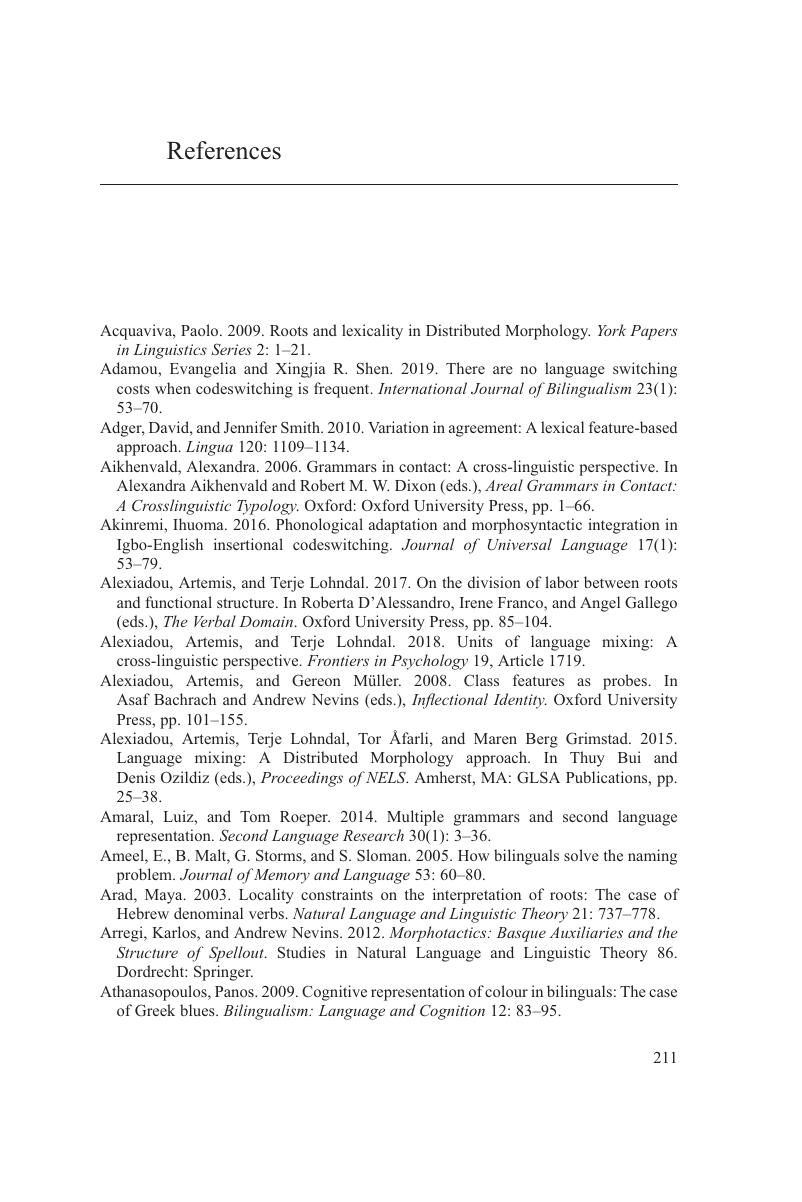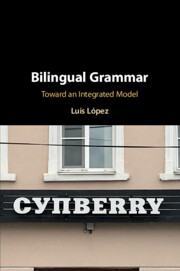Book contents
- Bilingual Grammar
- Bilingual Grammar
- Copyright page
- Contents
- Figures
- Acknowledgments
- 1 Introduction: Motivating a Unified Linguistic System
- 2 Remarks on Separationist Architectures
- 3 Phases, Distributed Morphology, and Some Contributions from Code-Switching
- 4 1Lex in MDM
- 5 Building the Case for 1Lex: Gender in Code-Switching
- 6 1PF in MDM
- 7 Lexical Questions: What Do You Learn When You Learn a Word?
- 8 Psycho-Syntactic Questions: Acquisition, Priming and Co-activation, and a Note on Processing Cost
- 9 Convergent and Divergent Paths
- 10 General Conclusions
- Book part
- Notes
- References
- Index
- References
References
Published online by Cambridge University Press: 02 May 2020
- Bilingual Grammar
- Bilingual Grammar
- Copyright page
- Contents
- Figures
- Acknowledgments
- 1 Introduction: Motivating a Unified Linguistic System
- 2 Remarks on Separationist Architectures
- 3 Phases, Distributed Morphology, and Some Contributions from Code-Switching
- 4 1Lex in MDM
- 5 Building the Case for 1Lex: Gender in Code-Switching
- 6 1PF in MDM
- 7 Lexical Questions: What Do You Learn When You Learn a Word?
- 8 Psycho-Syntactic Questions: Acquisition, Priming and Co-activation, and a Note on Processing Cost
- 9 Convergent and Divergent Paths
- 10 General Conclusions
- Book part
- Notes
- References
- Index
- References
Summary

- Type
- Chapter
- Information
- Bilingual GrammarToward an Integrated Model, pp. 211 - 224Publisher: Cambridge University PressPrint publication year: 2020



